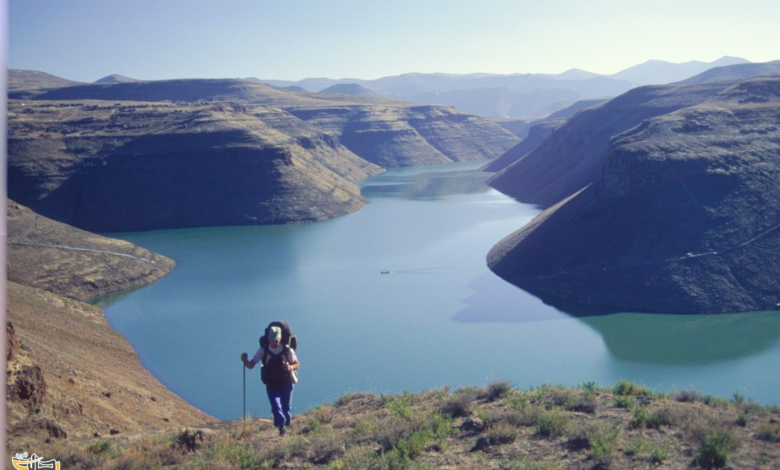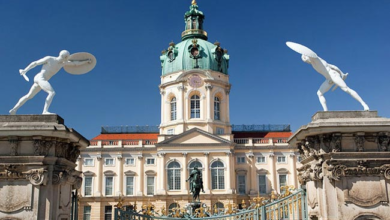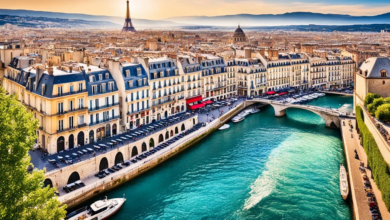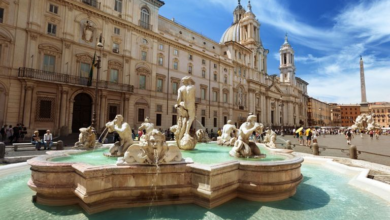The most important and best advice when traveling to Mongolia

The most important and best advice when traveling to Mongolia is to come prepared for the country’s unique cultural and natural environment. Here are some tips to help you make the most of your trip to Mongolia:
- Learn some basic Mongolian phrases: While many Mongolians speak English, knowing some basic phrases in Mongolian can go a long way in showing respect for the culture and making connections with locals.
- Dress appropriately: Mongolia has a harsh climate with cold winters and hot summers. Dressing in layers and bringing appropriate gear for the season is important. Additionally, it’s important to dress modestly and respectfully, especially when visiting religious sites.
- Respect local customs and traditions: Mongolian culture has a long and rich history, and it’s important to be respectful of local customs and traditions, including the nomadic way of life, the importance of family and community, and the reverence for nature and the environment.
- Be prepared for the nomadic lifestyle: Much of Mongolia’s population lives a nomadic lifestyle, and visitors should be prepared for the unique experiences and challenges that come with this way of life. This can include staying in traditional ger tents, riding horses or camels, and experiencing local customs and traditions.
- Be mindful of the environment: Mongolia’s natural environment is pristine and beautiful, and it’s important to be mindful of the impact of tourism on the environment. Visitors should take care to follow Leave No Trace principles and respect local efforts to preserve the environment.
- Be open to new experiences: Mongolia offers a unique and unforgettable travel experience, and visitors should be open to new experiences and adventures, including horseback riding, hiking, and experiencing the country’s vibrant cultural traditions.
By following these tips, visitors to Mongolia can have a safe and enjoyable trip while experiencing the country’s unique culture, history, and natural beauty.
- Research the best time to visit: Mongolia has extreme weather conditions, with very cold winters and hot summers. The best time to visit depends on your interests and activities, but generally, the summer months from June to August are the most popular for outdoor activities and festivals.
- Be aware of the altitude: Mongolia has high altitude regions, especially in the western part of the country. Visitors should be aware of the potential effects of altitude sickness and take necessary precautions, such as staying hydrated and acclimating slowly.
- Bring appropriate gear for outdoor activities: Mongolia is known for its outdoor activities, including hiking, horseback riding, and camping. Visitors should bring appropriate gear, such as sturdy hiking boots, warm clothing, and camping equipment.
- Try traditional Mongolian food: Mongolian cuisine is unique and delicious, featuring hearty meat dishes, dairy products, and traditional beverages such as airag (fermented mare’s milk). Visitors should try some traditional Mongolian food, such as khorkhog (meat cooked with hot stones), buuz (steamed dumplings), and suutei tsai (salted milk tea).
- Visit the Gobi Desert: The Gobi Desert is one of the most popular tourist destinations in Mongolia, known for its stunning landscapes, unique wildlife, and archaeological sites. Visitors can take a guided tour of the desert, ride camels, and visit the famous Flaming Cliffs.
- Respect local wildlife: Mongolia is home to unique and endangered wildlife, such as the snow leopard and Gobi bear. Visitors should respect local efforts to protect these species and follow responsible tourism practices, such as not disturbing wildlife habitats.
- Learn about Mongolian history and culture: Mongolia has a long and rich history, including the reign of Genghis Khan and the Mongol Empire. Visitors should take the time to learn about Mongolian history and culture, including traditional music, dance, and art.
- Be prepared for remote locations: Mongolia is a vast country with many remote locations, and visitors should be prepared for limited infrastructure and amenities in some areas. It’s important to bring appropriate supplies and plan ahead when traveling to remote locations.
By following these tips, visitors to Mongolia can have a safe and enjoyable trip while experiencing the country’s unique culture, history, and natural beauty.
- Take a horseback riding tour: Horseback riding is a popular activity in Mongolia, and visitors can take guided tours to experience the country’s beautiful landscapes and nomadic culture.
- Visit the Orkhon Valley: The Orkhon Valley is a UNESCO World Heritage Site located in central Mongolia, known for its stunning natural beauty and historic sites, including ancient rock carvings and the ruins of the capital of the Mongol Empire.
- Learn about traditional Mongolian art: Mongolia has a rich tradition of art, including painting, sculpture, and traditional crafts such as felt-making and embroidery. Visitors should take the opportunity to learn about traditional Mongolian art and purchase souvenirs from local artists.
- Try traditional Mongolian clothing: Traditional Mongolian clothing, including the deel (a long robe) and the boots, is unique and stylish. Visitors can try on traditional clothing and take photos, or purchase their own deel as a souvenir.
- Take a hot air balloon ride: Hot air balloon rides are available in some areas of Mongolia, offering a unique perspective on the country’s beautiful landscapes and nomadic way of life.
- Visit the Hustai National Park: The Hustai National Park is a protected area located near Ulaanbaatar, known for its stunning landscapes and the reintroduction of the Przewalski’s horse, an endangered species.
- Attend a local festival: Mongolia has many local festivals throughout the year, celebrating everything from traditional music and dance to local food and customs. Visitors should take the opportunity to attend a local festival to experience the country’s unique culture and traditions.
- Visit the Khustain Nuruu National Park: The Khustain Nuruu National Park is a protected area located near Ulaanbaatar, known for its beautiful landscapes and the reintroduction of the wild takhi, also known as the Przewalski’s horse.
- Learn about the history of Genghis Khan: Genghis Khan is one of the most important figures in Mongolian history, and visitors should take the opportunity to learn about his life and legacy, including visiting historic sites such as his birthplace and the site of his mausoleum.
By following these tips, visitors to Mongolia can have a safe and enjoyable trip while experiencing the country’s unique culture, history, and natural beauty.
here are some additional tips to consider when traveling to Mongolia:
- Experience the traditional Mongolian sport of archery: Archery is a popular traditional sport in Mongolia, and visitors can watch competitions or even try their hand at the sport with the help of a local guide.
- Visit the Genghis Khan Statue Complex: The Genghis Khan Statue Complex is a large statue of the famous Mongolian leader, located near Ulaanbaatar. Visitors can climb to the top of the statue for panoramic views of the surrounding area.
- Learn about the history of the Silk Road: Mongolia was an important location on the historic Silk Road trade route, and visitors should take the opportunity to learn about the history and impact of this important trade network.
- Try traditional Mongolian dairy products: Mongolia is known for its dairy products, including a variety of cheeses, yogurts, and the traditional beverage of airag (fermented mare’s milk). Visitors should try some of these unique and delicious products.
- Visit the Tsenkher Hot Springs: The Tsenkher Hot Springs are a popular natural attraction in central Mongolia, known for their healing properties and beautiful scenery.
- Take a guided tour of the Gobi Desert: The Gobi Desert is one of the most unique and beautiful landscapes in Mongolia, and visitors can take a guided tour to explore its stunning beauty and learn about the local culture and history.
- Visit the Kharkhorin Museum: The Kharkhorin Museum is a small but informative museum located in the town of Kharkhorin, showcasing the rich history and culture of Mongolia.
- Respect local customs for gift-giving: Gift-giving is an important part of Mongolian culture, and visitors should be aware of local customs and etiquette when giving gifts, such as presenting gifts with both hands and avoiding giving clocks or knives as gifts.
- Take a guided tour of the Altai Mountains: The Altai Mountains are a stunning mountain range located in western Mongolia, and visitors can take a guided tour to experience the region’s natural beauty and learn about the local culture and history.
- Learn about traditional Mongolian medicine: Traditional Mongolian medicine is a unique and ancient system of healing that includes herbal remedies, massage, and other therapies. Visitors can learn about and experience traditional Mongolian medicine at local clinics and healing centers.
- Visit the Khorgo-Terkhiin Tsagaan Nuur National Park: The Khorgo-Terkhiin Tsagaan Nuur National Park is a protected area located in central Mongolia, known for its stunning landscapes, including the Khorgo volcano and Terkhiin Tsagaan Nuur (White Lake).
- Attend a shaman ceremony: Shamanism is an important part of Mongolian culture, and visitors can attend a shaman ceremony to learn about the traditional spiritual practices and beliefs of the local people.
- Learn about the history of Mongolian wrestling: Mongolian wrestling is a traditional sport that dates back centuries, and visitors can learn about the history and cultural significance of this unique sport at local competitions or museums.
- Volunteer with a local organization: There are many local organizations in Mongolia working to support the environment, education, and other important causes. Visitors can volunteer with these organizations to make a positive impact and learn more about the local culture and community.
- Visit the Amarbayasgalant Monastery: The Amarbayasgalant Monastery is a historic Buddhist monastery located in northern Mongolia, known for its beautiful architecture and artwork.
- Take a guided tour of the Khövsgöl Nuur National Park: The Khövsgöl Nuur National Park is a protected area located in northern Mongolia, known for its stunning landscapes and the pristine waters of Lake Khövsgöl.
- Learn about the history of Mongolian script: Mongolian script is a unique and beautiful writing system that has evolved over centuries. Visitors can learn about the history and cultural significance of Mongolian script at local museums and cultural centers.
- Respect local customs for hospitality: Hospitality is an important part of Mongolian culture, and visitors should be aware of local customs and etiquette when accepting hospitality, such as offering gifts and showing gratitude for the kindness of their hosts.
here are some additional tips to consider when traveling to Mongolia:
- Visit the Uvs Lake Basin: The Uvs Lake Basin is a remote and beautiful area located in western Mongolia, known for its stunning landscapes and unique wildlife, including snow leopards and wild camels.
- Learn about traditional Mongolian cuisine: Mongolian cuisine is hearty and delicious, featuring meat dishes, soups, and dumplings. Visitors should try local specialties such as khuushuur (fried meat pastry) and buuz (steamed dumplings).
- Take a guided tour of the Khustai National Park: The Khustai National Park is a protected area located near Ulaanbaatar, known for its stunning landscapes and the reintroduction of the wild takhi (Przewalski’s horse).
- Attend a traditional Mongolian wedding: Weddings are an important and festive occasion in Mongolian culture, and visitors may have the opportunity to attend a traditional wedding and experience the customs and traditions of the local people.
- Learn about the history of Mongolian Buddhism: Buddhism has been an important part of Mongolian culture for centuries, and visitors can learn about the history and cultural significance of the religion at local temples and monasteries.
- Visit the Zaisan Memorial: The Zaisan Memorial is a historic monument located in the hills overlooking Ulaanbaatar, honoring the Soviet soldiers who fought in World War II.
- Explore the Kharkhorin Archaeological Site: The Kharkhorin Archaeological Site is a historic site located in the town of Kharkhorin, featuring the ruins of the capital of the Mongol Empire and other important historic sites.
- Learn about traditional Mongolian games: Mongolian culture includes a variety of traditional games and activities, including ankle-bone shooting and knuckle-bone shooting. Visitors can learn about and experience these unique games with the help of a local guide.
- Visit the Gobi Gurvansaikhan National Park: The Gobi Gurvansaikhan National Park is a protected area located in southern Mongolia, known for its stunning landscapes, including sand dunes and canyons, and unique wildlife such as the Gobi bear.
- Respect local customs for animal husbandry: Animal husbandry, including the herding of sheep, goats, horses, and other livestock, is an important part of Mongolian culture. Visitors should be respectful of local customs and etiquette when interacting with animals and their herders.
By following these tips, visitors to Mongolia can have a safe and enjoyable trip while experiencing the country’s unique culture, history, and natural beauty.
- Take a guided tour of the Khögnö Khan Nature Reserve: The Khögnö Khan Nature Reserve is a protected area located in central Mongolia, known for its stunning landscapes, including sand dunes, rocky outcroppings, and grassy plains.
- Learn about traditional Mongolian music: Mongolian music is unique and beautiful, featuring traditional instruments such as the morin khuur (horsehead fiddle) and throat singing. Visitors can learn about and experience traditional Mongolian music at local concerts and performances.
- Visit the Erdene Zuu Monastery: The Erdene Zuu Monastery is a historic Buddhist monastery located in Kharkhorin, known for its beautiful architecture and artwork.
- Take a guided tour of the Khövsgöl Ice Festival: The Khövsgöl Ice Festival is an annual event held in northern Mongolia, celebrating the winter season with traditional games, ice sculpture contests, and other activities.
- Learn about the history of Mongolian nomadic culture: Nomadic culture has been an important part of Mongolian history and culture for centuries, and visitors can learn about the history, traditions, and daily life of nomadic herders at local museums and cultural centers.
- Visit the Bayanzag (Flaming Cliffs): The Bayanzag, also known as the Flaming Cliffs, are a stunning and unique landscape located in the Gobi Desert, known for their red sandstone cliffs and the discovery of dinosaur fossils.
- Attend a traditional Mongolian concert: Mongolia has a rich tradition of music, including traditional throat singing and contemporary pop and rock music. Visitors can attend a traditional concert to experience the music and culture of the local people.
- Take a guided tour of the Altai Tavan Bogd National Park: The Altai Tavan Bogd National Park is a protected area located in western Mongolia, known for its stunning landscapes, including glaciers, lakes, and mountain peaks.
- Learn about the history of Mongolian art: Mongolian art has a rich and unique history, including traditional painting, sculpture, and crafts such as felt-making and embroidery. Visitors can learn about and experience traditional Mongolian art at local museums and galleries.
- Respect local customs for horseback riding: Horseback riding is an important part of Mongolian culture and daily life, and visitors should be respectful of local customs and etiquette when participating in horseback riding activities.
- Visit the Ongi Monastery: The Ongi Monastery is a historic Buddhist monastery located in the Gobi Desert, known for its beautiful architecture and the ruins of the once-thriving monastic complex.
- Learn about the history of Mongolian wrestling: Mongolian wrestling is a traditional sport that dates back centuries, and visitors can learn about the history and cultural significance of this unique sport at local competitions or museums.
- Attend the Naadam Festival: The Naadam Festival is a traditional Mongolian festival held annually in July, featuring competitions in the traditional sports of wrestling, archery, and horse racing.
- Visit the Gandan Monastery: The Gandan Monastery is a historic Buddhist monastery located in Ulaanbaatar, known for its beautiful architecture and the statue of Avalokiteshvara, one of the largest in the world.
- Learn about the history of Mongolian military culture: Military culture has been an important part of Mongolian history and culture for centuries, and visitors can learn about the history, traditions, and tactics of Mongolian warriors at local museums and cultural centers.
- Take a guided tour of the Orkhon Valley Cultural Landscape: The Orkhon Valley Cultural Landscape is a UNESCO World Heritage Site located in central Mongolia, known for its stunning landscapes and the rich history and culture of the local people.
- Visit the Ulaanbaatar Opera House: The Ulaanbaatar Opera House is a beautiful and historic building located in the heart of Ulaanbaatar, featuring performances of traditional Mongolian opera and ballet, as well as international productions.
- Learn about the history of Mongolian literature: Mongolian literature has a rich and unique history, including epic poems, folk tales, and contemporary literature. Visitors can learn about and experience traditional Mongolian literature at local museums and cultural centers.
- Take a guided tour of the Khorloogiin Choibalsan Museum: The Khorloogiin Choibalsan Museum is a small but informative museum located in the town of Choibalsan, showcasing the history and legacy of one of Mongolia’s most important leaders.
- Respect local customs for photography: Photography is a popular activity in Mongolia, but visitors should be respectful of local customs and etiquette when taking photos, such as asking for permission before photographing people or religious sites.
- Visit the Gorkhi-Terelj National Park: The Gorkhi-Terelj National Park is a protected area located near Ulaanbaatar, known for its stunning landscapes, including granite cliffs, forests, and the Tuul River.
- Learn about the history of Mongolian architecture: Mongolian architecture has a rich and unique history, including traditional nomadic dwellings such as the yurt, as well as Buddhist temples and other historic buildings. Visitors can learn about and experience traditional Mongolian architecture at local museums and cultural centers.
- Take a guided tour of the Kharkhorin Museum: The Kharkhorin Museum is a small but informative museum located in the town of Kharkhorin, showcasing the history and culture of the local people and the Mongol Empire.
- Attend a traditional Mongolian dance performance: Mongolia has a rich tradition of dance, including traditional folk dances and contemporary dance performances. Visitors can attend a traditional dance performance to experience the music and culture of the local people.
- Learn about the history of Mongolian mining: Mining has been an important part of Mongolia’s economy and history, and visitors can learn about the history and impact of mining on the local people and environment at local museums and cultural centers.
- Visit the Zavkhan Archaeological Site: The Zavkhan Archaeological Site is a historic site located in western Mongolia, featuring the ruins of a medieval city and other important historic sites.
- Take a guided tour of the Gobi Desert: The Gobi Desert is a stunning and unique landscape located in southern Mongolia, known for its sand dunes, rocky outcroppings, and unique wildlife such as the Gobi bear and Bactrian camel.
- Learn about the history of Mongolian astronomy: Astronomy has been an important part of Mongolian culture and history for centuries, and visitors can learn about the history and significance of astronomy in Mongolian culture at local museums and cultural centers.
- Visit the Choijin Lama Temple Museum: The Choijin Lama Temple Museum is a historic Buddhist temple located in Ulaanbaatar, now converted into a museum showcasing the history and culture of Mongolia.
- Respect local customs for gift-giving: Gift-giving is an important part of Mongolian culture, and visitors should be aware of local customs and etiquette when giving and receiving gifts, such as offering gifts with both hands and showing gratitude for the kindness of their hosts.
By following these tips, visitors to Mongolia can have a safe and enjoyable trip while experiencing the country’s unique culture, history, and natural beauty.
- Visit the Khustain Nuruu National Park: The Khustain Nuruu National Park is a protected area located near Ulaanbaatar, known for its stunning landscapes and the reintroduction of the wild takhi (Przewalski’s horse).
- Learn about traditional Mongolian medicine: Traditional Mongolian medicine is based on herbal remedies and other natural treatments, and visitors can learn about and experience traditional Mongolian medicine at local clinics and cultural centers.
- Take a guided tour of the Bogd Khan Palace Museum: The Bogd Khan Palace Museum is a historic palace located in Ulaanbaatar, now converted into a museum showcasing the history and culture of Mongolia.
- Attend a traditional Mongolian art exhibition: Mongolian art includes a variety of traditional and contemporary styles, including painting, sculpture, and crafts such as felt-making and embroidery. Visitors can attend a traditional art exhibition to experience the art and culture of the local people.
- Learn about the history of Mongolian shamanism: Shamanism has been an important part of Mongolian culture and history for centuries, and visitors can learn about the history and significance of shamanism in Mongolian culture at local museums and cultural centers.
- Visit the Tsenkher Hot Springs: The Tsenkher Hot Springs are a natural hot spring located in central Mongolia, known for their therapeutic properties and stunning natural surroundings.
- Take a guided tour of the Khövsgöl Lake: The Khövsgöl Lake is a stunning and pristine lake located in northern Mongolia, known for its crystal-clear waters and unique wildlife such as the Siberian ibex and reindeer.
- Learn about the history of Mongolian calligraphy: Mongolian calligraphy has a rich and unique history, including traditional scripts such as the Mongol script and the Soyombo script. Visitors can learn about and experience traditional Mongolian calligraphy at local museums and cultural centers.
- Visit the Gobi Desert Museum: The Gobi Desert Museum is a small but informative museum located in the town of Dalanzadgad, showcasing the history and culture of the Gobi Desert region and its unique wildlife.
- Respect local customs for hospitality: Hospitality is an important part of Mongolian culture, and visitors should be respectful of local customs and etiquette when interacting with their hosts, such as showing gratitude for their kindness and generosity and respecting their customs and traditions.
By following these tips, visitors to Mongolia can have a safe and enjoyable trip while experiencing the country’s unique culture, history, and natural beauty.



